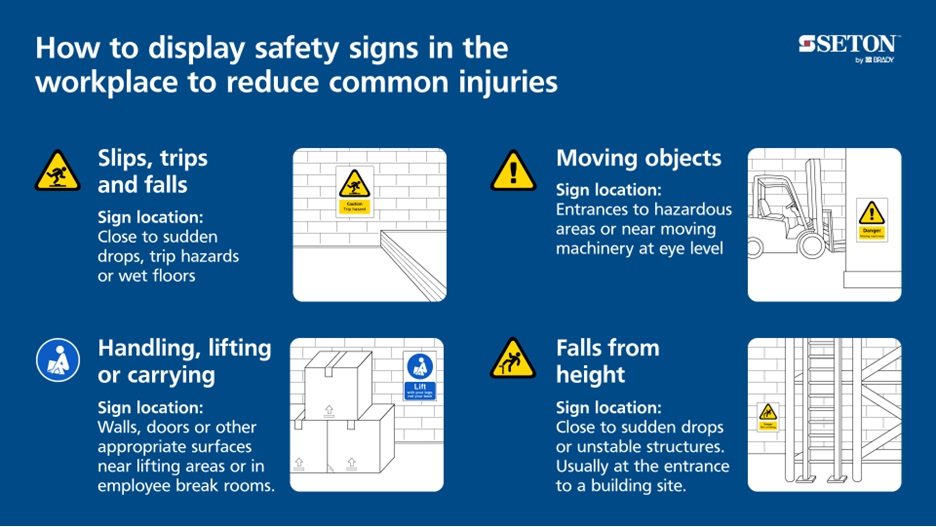Lifestyle
The Best Tips For Preventing Common Workplace Injuries

In today’s fast-paced work environments, employee safety remains a paramount concern for businesses across all industries. Recent statistics have revealed a staggering truth: more than half a million work-related injuries could potentially be prevented through proper safety measures and awareness.
This article delves into the causes of workplace accidents and their impact on both employees and employers. Join us as we explore effective and practical strategies to create safer work environments.
The scale of the problem
Workplace injuries are not just isolated incidents, but a significant challenge for businesses and workers alike. Slips, trips, and falls account for 32% of non-fatal workplace injuries. While some accidents may seem unavoidable, many can be prevented with some simple yet effective safety measures.
One of the most straightforward and impactful solutions to reduce employee absences due to injuries is the proper use of safety signs. For instance, a well-placed wet floor sign can make the crucial difference between an employee navigating a freshly mopped area safely or suffering a potentially serious slip. Similarly, signs indicating potential trip hazards can alert workers to dangers they might otherwise overlook, preventing falls and, in turn, absences.
The cost
The impact of workplace injuries extends beyond the immediate physical harm to employees. In the 2021/22 period, the estimated annual cost of workplace injuries reached £20.7 billion, marking a significant increase of £1.9 billion from the previous year.
The consequences of workplace injuries can be life-altering for employees. Beyond the immediate pain, workers may face challenging living circumstances due to their inability to work. Injuries can sometimes lead to early retirement from specific industries, disrupting careers and livelihoods. Plus, high rates of workplace injuries contribute to increased employee turnover, creating additional challenges for businesses in terms of recruitment and training.
Strategies for prevention
As you can see, the size of the problem is huge, but there are some small steps we can all take to prevent accidents from occurring in the workplace:
- Effective safety signs
Employers have a legal and moral obligation to provide clear safety signs when significant risks cannot be avoided or controlled through other means. These signs must be regularly maintained and strategically placed for maximum visibility. The colour coding of signs is also important – red for prohibition, blue for mandatory actions, and black and yellow for danger, caution, or warning.
- Anti-slip measures
Given the high slips, trips, and fall rates in the workplace, investing in anti-slip matting, tape, and stair treads can significantly reduce these common incidents. Proper entrance matting is particularly important in keeping indoor environments clean and dry, minimising the risk of slips due to water or mud being tracked in from outside.
- Zone classification
Effective workspace zoning is critical, especially in industries dealing with hazardous materials. Areas with explosion risks must adhere to ATEX zone classifications. Regular risk assessments are essential to correctly classify and manage these zones, ensuring that appropriate safety measures are in place for each area.
- Good housekeeping and organisation
Maintaining a clean and organised workspace is fundamental to preventing accidents. This includes readily available spill-cleaning kits, ensuring obstacles are cleared, properly covering cables, and using shadow boards to organise equipment. These practices help reduce common causes of workplace accidents by creating a more orderly and efficient environment.
- Training
Perhaps the most crucial factor in reducing workplace accidents is thorough and ongoing employee training. By providing staff with the necessary knowledge and tools to identify and mitigate risks in their workplace, businesses can significantly enhance workplace safety. Regular refresher courses are also important, particularly for tasks involving safety equipment usage, machinery operation, and understanding different or specific safety signage.
Creating a safer workplace is an ongoing process that requires commitment from both employers and employees. Regular safety audits, communication channels for reporting potential hazards, and a culture prioritising safety, can all contribute to reducing the number of workplace injuries.
A combination of effective safety signage, physical preventive measures, proper workspace organisation, and training, businesses can significantly reduce the risk of workplace accidents.
Plus, the investment in safety measures pays dividends in reduced costs associated with injuries, improved employee morale, and enhanced company reputation in all sectors.

















































